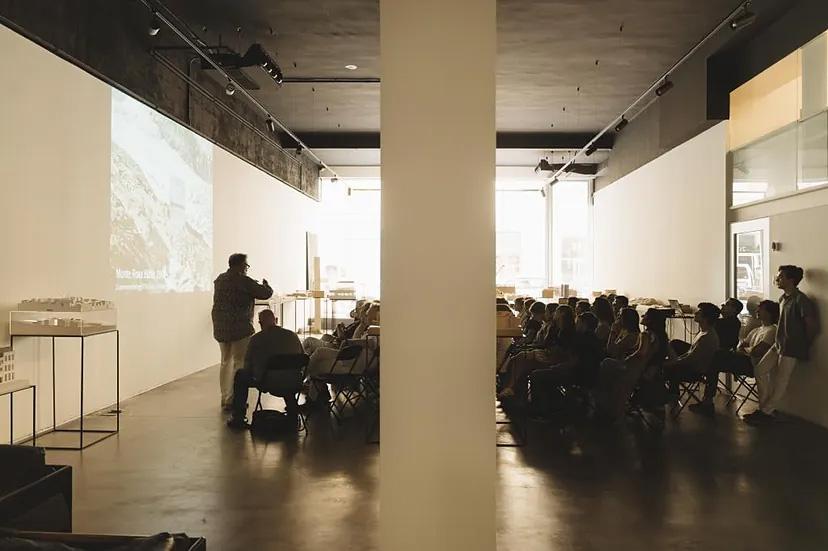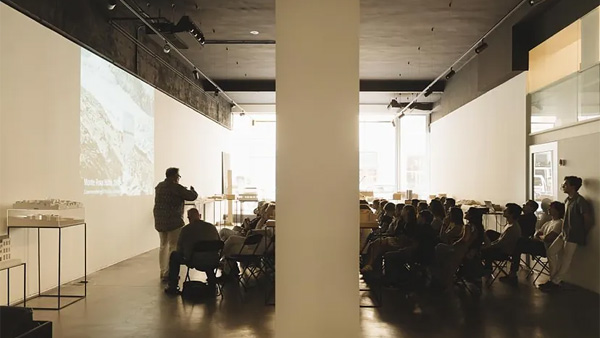The most modern school of architecture in the world, in Pamplona

Patxi Mangado and Andrea Deplazes have launched BAI in Navarre, a demanding postgraduate program for architects adapted to robotic construction and determined to take the discipline back to its essence. That is: project and innovation.
Education has become a major sign of the malaise of the contemporary world, from the elementary school that children attend to the elite universities that collide with the government of Donald Trump in the United States, and the technical postgraduate studies that in the end train professionals. “What brings us together is that we are all professors and we’ve worried for a long time about the work we do, about the devaluation of the education we offer,” as the architect Patxi Mangado was saying some days ago, and as his colleague Andrea Deplazes repeated, almost with the same words. “Education is systematically devalued. We go from sharing knowledge and working on projects to creating artifacts that are completely disconnected from reality.”
Mangado and Deplazes are professors – one in Navarra and the other at ETH Zürich, which always comes up mentioned as the best architecture school in Europe – and both were in Ultzama last week, in the Navarrese valley of the same name, working with 15 students participating in the Campus of the Fundación Arquitectura y Sociedad. The campus, the eighth edition held by Mangado at his Ultzama house, is especially important this year because it precedes the first course of the BAI Institute (Building and Architecture Institute). The new school will welcome its first students in January, in Pamplona, with a postgraduate program in three semesters focused, for the first time in Europe, on doing architecture with 21st-century technology, with prefabricated construction in factories and robotized.
“People want to save the world, and then they talk and talk about things they don’t understand. There is a lot of storytelling in the world and very little focus,” says Deplazes, author of Constructing Architecture, one of the first texts that criticized the drift of the discipline, increasingly devoid of technical knowledge and ever closer to social sciences. “In the end, our schools don’t do architecture but sociology. But poorly done sociology, sociology of political slogans,” says Mangado. “Of course, architects must read a lot about inequality and about sustainability to do their job well. But their job should be doing architecture, not writing manifestoes,” Mangado adds.
BAI is born from a hypothesis: construction is at the start of a major technological transformation. The images of mobile concrete mixers and of masons bricklaying facades will disappear little by little and be replaced with pieces manufactured in factories and assembled on site. Construction will be faster, more precise, less contaminating, and better finished. Will it be cheaper? Yes, but not immediately. However, what’s important for Mangado and Deplazes is that, under those circumstances, architects can regain their autonomy after, as Mangado states, decades of resignation. “Most of our students are, if they’re lucky, facade consultants at engineering companies. Not very well-paid consultants without much capacity to change projects.”
According to Mangado and Deplazes, technological change offers the opportunity of putting architecture students back at the center of the process. Of letting them be the professionals who know which manufacturers can make the structures, the envelopes, the facades, and the floors that work best for each project, for each budget. Of being the mediators that work with manufacturers in their factories, the ones in charge of developing the products, and of controlling their cost.
In other words: technological change will encourage architects to occupy the place that construction companies have now, and which Mangado described in Ultzama as inefficient and expensive mediators that do not provide real value. Isn’t it a bit daring to imagine a future without construction companies, now that Spain has a housing deficit of 200,000 units a year? “That is a model that has always existed and that prevails in Latin America,” was Mangado’s reply in Ultzama.
A few interesting pieces of data: the BAI will be born in Pamplona, under the initiative of a professor at the University of Navarra, but its main academic accreditation will be provided by the ETH Zürich. The land and housing department of the region of Navarre will support the institute but the objective of Mangado and Deplazes is to achieve financial autonomy in two years. The classroom building will be located by an industrial warehouse in Pamplona. There, the students, 40 per promotion, will have to work on real commissions that, among other things, will help finance the school and provide scholarships to as many students as possible. “The project has to be at the center of education in Architecture,” Deplazes explained in Ultzama. “Because the project is thinking. A social housing project is what allows us to think about what social housing is, what its problems and real possibilities are. In the case of social housing, for instance, we always talk about the income of the beneficiaries and never about the pleasure these social dwellings offer.”
The program will be demanding: the master at BAI will be completed with 200 ECTS university credits (some 25 hours of work per credit), which is three times what many master’s degrees require. “Some days will go from eight in the morning to eight at night. We seek passionate and non-conformist students, rather than super brilliant academic records,” said Mangado in Ultzama, where some of the professors of the future BAI participated in the Campus of the Fundación Arquitectura y Sociedad: Carlos Jiménez from Houston, João Pedro Serôdio from Porto… In its syllabus there are modules that may be unexpected at a school like BAI: architectural thought, social sciences, history of construction… “We cannot build 600 social housing units in Vigo without knowing how a family works in the south of Europe.”
There is something else to say about the BAI in Pamplona: it will function as a research and development laboratory that will market new products, and which also hopes to finance its activity this way. Mangado also talked about his main battle these last years: to attract industrial companies to work with the institute’s students. Navarre, on principle, is a favorable territory, because it is the region with the best R+D investment statistics. But the contradiction is the same everywhere: medium-sized companies are more interested in the project than large ones.
Mangado, who has been a professor at Harvard, said just recently that this is the benchmark.
El Mundo: La escuela de Arquitectura más moderna del mundo, en Pamplona




